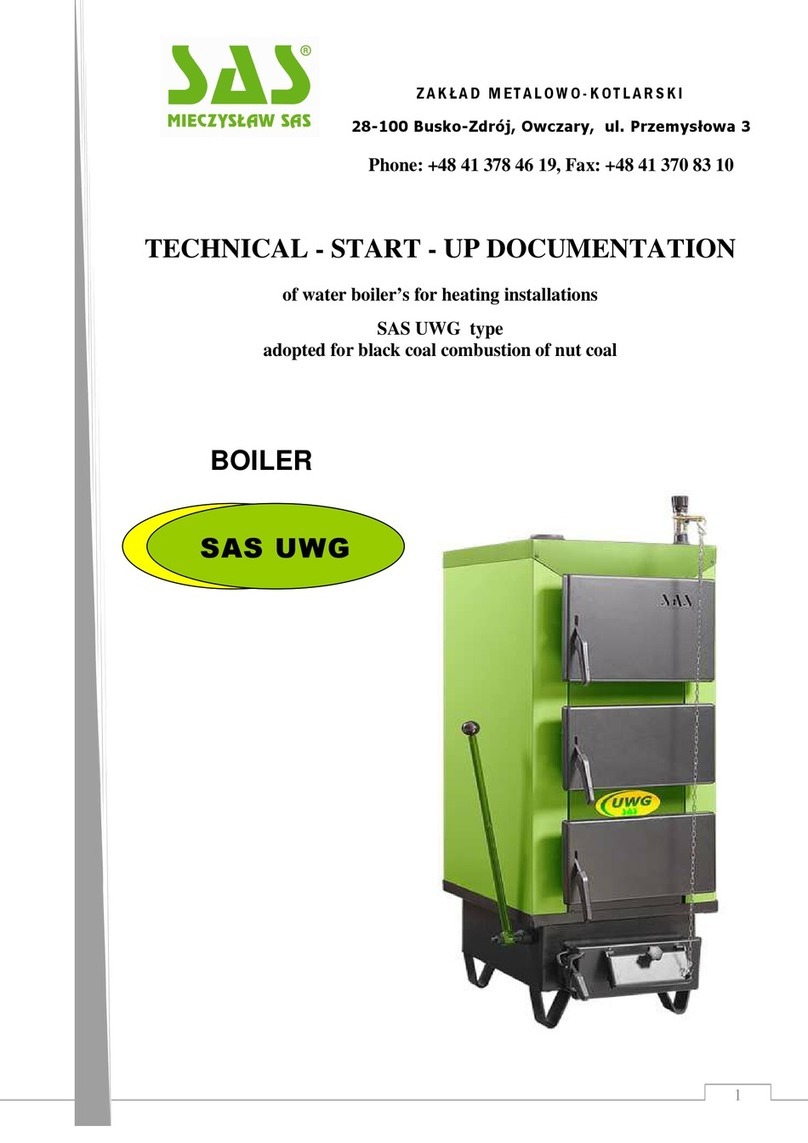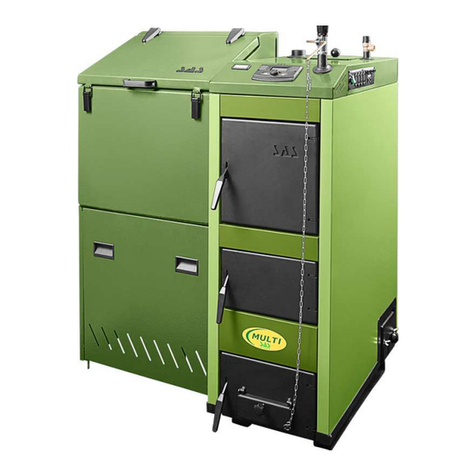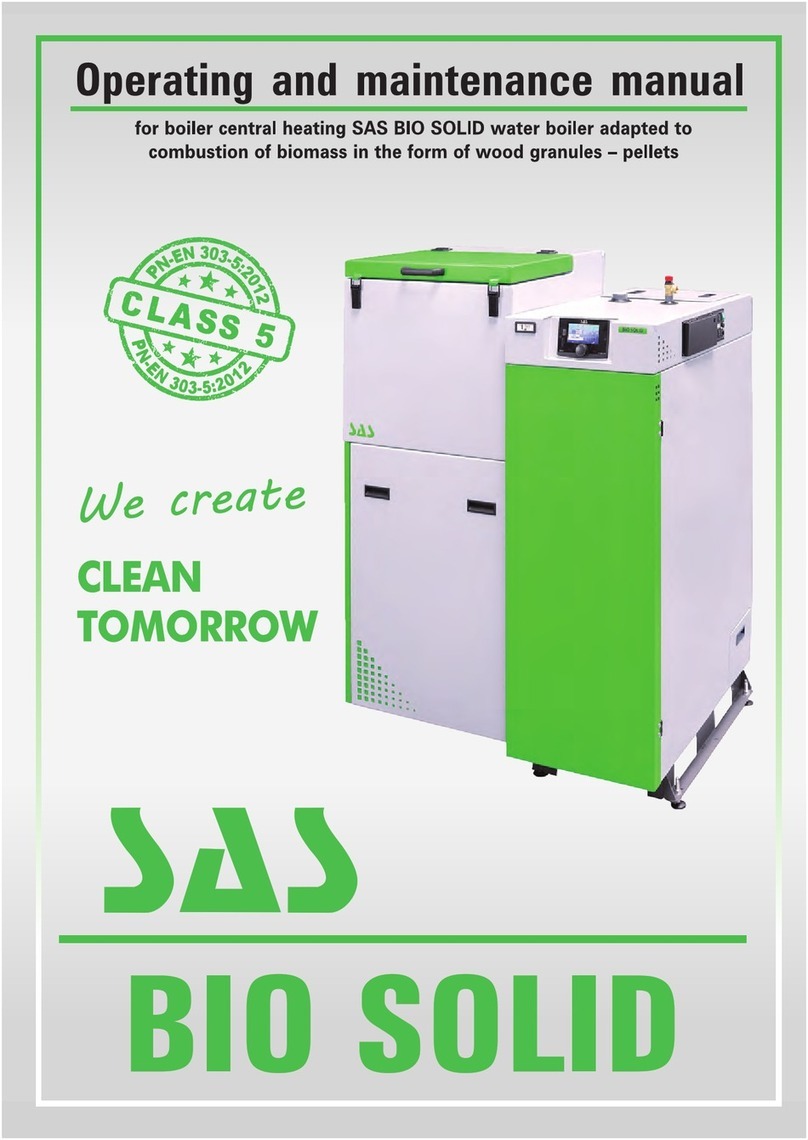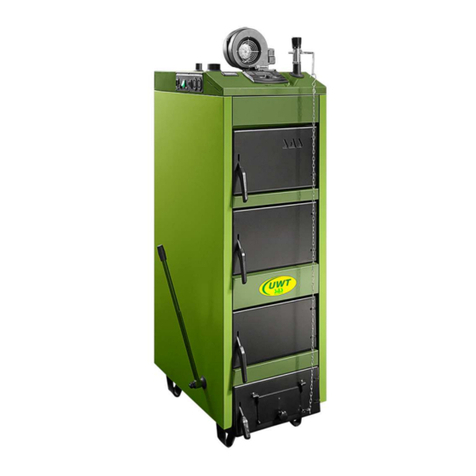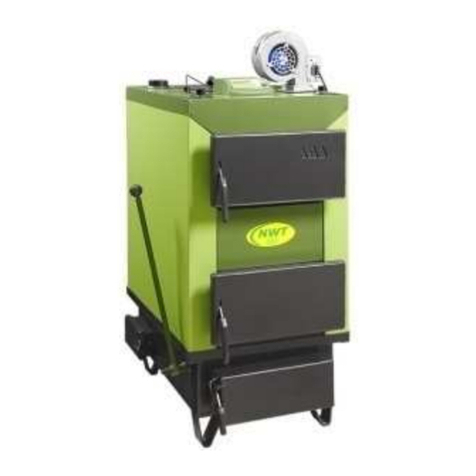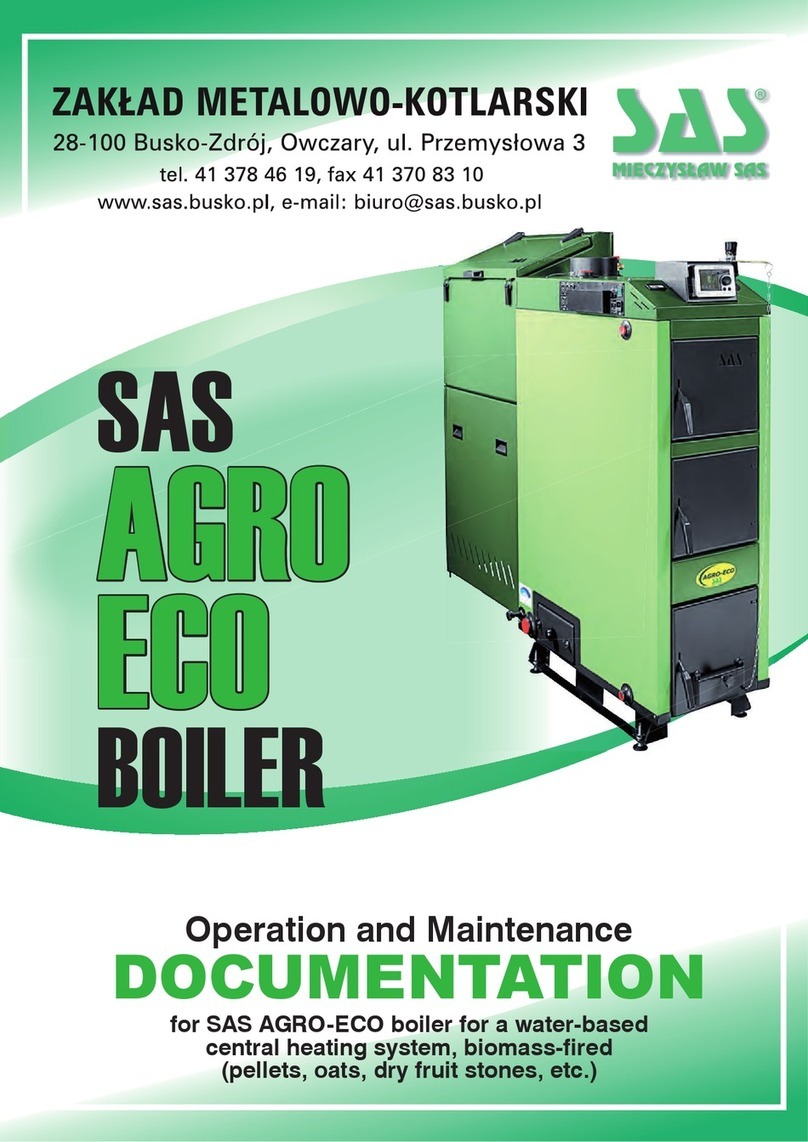
8
6.3 CONNECTING BOILER TO TE CHIMNEY
Chimney channel and connection should be performed according to the
requirements of detailed regulations being currently in force in the country of
destination (e.g. Ministry of Infrastructure Decree, as of 1 April 2002 Journal of
acts no. 75).
A boiler should be connected to a chimney with smoke conduit, which is
slightly rising towards the chimney. Smoke conduit length should not exceed 0.5
m. Area of chimney – smoke conduit connection should be precisely sealed.
The chimney’s height and section, as well as accurateness of its construction shall
ensure obtaining required chimney draught of min. 0.30 – 0.55 mbar.
Selection of the chimney’s height and section comparing to boiler power
should be based on detailed regulations being in force in the country of destination.
Assuming that it is not possible to achieve such parameters for chimney, and
chimney draught problems are experienced, resulting in improper boiler
performance, the gases blow-out fan, or chimney base together with built-in fan
may be applied, for supporting and stabilizing the draught. It is important for the
chimney to has its beginning at the level of boiler room floor, for the reason that
gases leaving the boiler are able to be repelled. It is also important, that in the
bottom part of chimney there is washout whole with tight closing.
In order to avoid the air back draught possibly appearing in the chimney, its height
should be above a crest of roof not less than 1.5 m. Chimney’s utility
(permeability) should be checked and confirmed by authorized chimney-sweeper
at least once a year.
PRIOR TO BOILER COMMISSIONING THE CHIMNEY SHOULD BE BASKED!
NOTE: It is recommended that the flue is made of stainless steel material.
Low temperatures in the boiler cause wet gases emission. This may be found as the
reason of wetting and corroding of brick chimneys.
6.4CONNECTING BOILER TO THE HEATING INSTALATION
The boiler should be connected to heat in installation with screw connectors.
Protecting measures for water heating installations of opened type should be
according to detailed regulations being in force in the country of destination (e.g.PN-
91/B-02413).
Volume of pressure vessel should be equal at least 4% volume o water in the entire
heating installation.
NOTE: Ascending and descending safety pipe as well as circulation pipe must
not be equipped with any valves. In addition, those pipes and the pressure
vessel should be protected against freezing.
Boilers of SAS MI type may work with gravitational or forced water circulation. If
installation is provided with circulation pump, than on feeding/return pipe the
differential valve should be installed. When blackout or pump malfunction occurs, this
valve will open and the system start work running by gravitation.


















